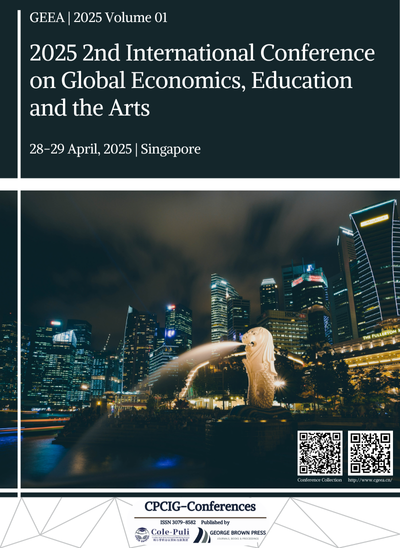Innovative Approaches in Online Language Education: Enhancing Cultural Competence in Virtual Classrooms
DOI:
https://doi.org/10.5281/zenodo.15515592Keywords:
online language education, virtual classrooms, cultural competence, intercultural learning, innovative teaching strategiesAbstract
As online language education becomes increasingly prevalent, its potential to foster intercultural competence has attracted growing scholarly interest. This study explores how innovative instructional approaches in virtual Chinese language classrooms can enhance students’ cultural understanding. By analyzing authentic teaching practices — such as reflection-based tasks, cross-cultural comparison projects, and interactive role-plays — the research demonstrates how online environments can support the development of cultural awareness, adaptability, and empathy. Although challenges such as time zone differences, unequal digital access, and inconsistent student engagement persist, strategic solutions — including asynchronous communication and low-bandwidth tools — offer practical ways to address these issues. The study concludes that well-designed online instruction can serve as an effective platform for cultivating intercultural learning and global citizenship, even in the absence of physical immersion.
References
1. A. J. Liddicoat and A. Scarino, Intercultural Language Teaching and Learning. Hoboken, NJ, USA: John Wiley & Sons, 2013. ISBN: 9781405198103.
2. A. E. Fantini, “Assessing intercultural competence: Issues and tools,” in The SAGE Handbook of Intercultural Competence, D. K. Deardorff, Ed. Thousand Oaks, CA, USA: SAGE Publications, Inc., 2009, pp. 456–476. ISBN: 9781412960458.
3. X. Lin and D. L. Schwartz, “Reflection at the crossroads of cultures,” Mind Cult. Act., vol. 10, no. 1, pp. 9–25, 2003, doi: 10.1207/S15327884MCA1001_03.
4. Z. Mo, “Artificial Intelligence Empowering Online Teaching of Chinese as a Foreign Language: Opportunities, Challenges, and Future Prospects”, Educ. Insights, vol. 1, no. 5, pp. 18–29, Dec. 2024, doi: 10.70088/nwwqch86.
5. T. J. Barbosa, “Zoom: An innovative solution for the live-online virtual classroom,” HETS Online J., vol. 9, no. 2, 2019, doi: 10.55420/2693.9193.v9.n2.292.
6. R. Hampel and U. Stickler, “The use of videoconferencing to support multimodal interaction in an online language classroom,” ReCALL, vol. 24, no. 2, pp. 116–137, 2012, doi: 10.1017/S095834401200002X.
7. F. Helm, “The practices and challenges of telecollaboration in higher education in Europe,” Lang. Learn. Technol., vol. 19, no. 2, pp. 197–217, 2015, doi: 10125/44424.
8. R. E. Prasetya, “Exploring English language instruction through synchronous virtual meetings in Indonesian EFL context: Pedagogical approaches, opportunities and challenges, and multimedia integration,” J. Engl. Foreign Lang., vol. 14, no. 1, pp. 179–208, 2024, doi: 10.23971/jefl.v14i1.7532.
9. M. Okmawati and Y. Tiarina, “A comparative study on the implementation of Padlet and Jamboard toward students’ moti-vation,” in Proc. 5th Int. Conf. Lang., Lit., Educ. (ICLLE-5 2022), Atlantis Press, 2022, pp. 367–375, doi: 10.2991/978-2-494069-85-5_39.
Downloads
Published
Issue
Section
License
Copyright (c) 2025 Zengxian Mo (Author)

This work is licensed under a Creative Commons Attribution 4.0 International License.



